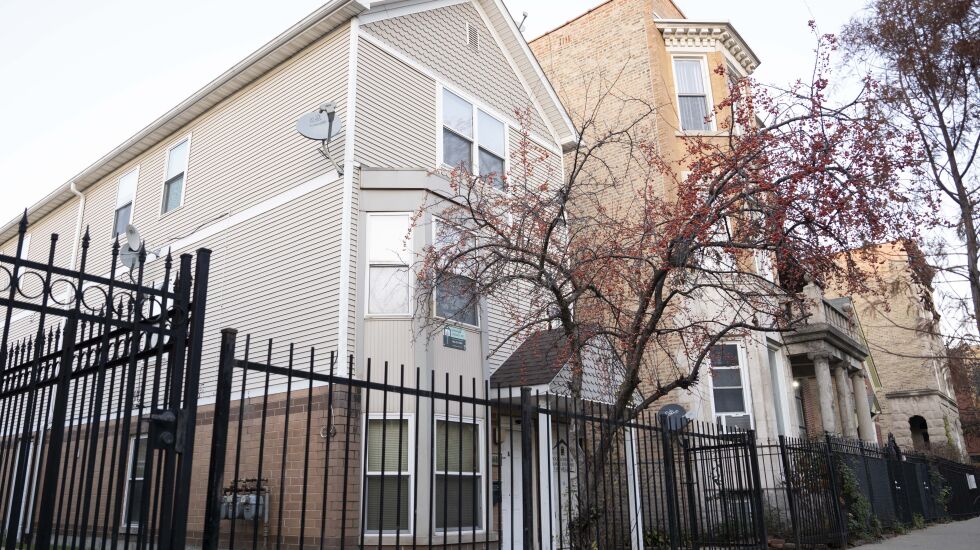
The Chicago Housing Authority doesn’t have the greatest reputation for keeping its promises.
So every time it makes a new one, it has something to prove to many Chicagoans.
The agency owns property in every Chicago ward and, via vouchers or its own housing, serves 63,000 households, with more than 200,000 people on its waiting lists.
The CHA has announced a program to renovate part of its holdings — a portion that, for a bureaucracy focused on larger sites, can be too easy to neglect. It involves small- to mid-sized apartment buildings and single-family homes — yes, the CHA owns some. These are vacant properties it plans to fix up as part of an initiative called Restore Home.
The agency discussed details with its board last week. The projected $50 million cost is expected to be part of its 2024 budget, due for approval in December.
It involves repairs and in some cases gut rehabs to create 217 housing units in 77 buildings, including 36 small- to mid-sized apartment buildings, especially those with two to six flats. And the CHA has a goal of finishing the work in 18 months.
“It’s an aggressive target,” said the agency’s CEO, Tracey Scott.
That’s probably an understatement as financing, supply issues and permits all can produce delays. But she said the CHA has analyzed the vacant parcels, worked up plans and found the funding.
Staff and contractors, many working under a federal program to steer job opportunities to those getting housing help, will be “laser focused” on the mission, Scott said. She said the CHA is in close contact with the city’s Buildings Department to smooth the permit process.
The vacant properties, many more than 40 years old and with outdated mechanical systems, are among the nearly 900 smaller properties the CHA owns citywide. They are its “scattered sites” portfolio that dates from when the agency, for years accused of reinforcing racial segregation, was under legal pressure to expand holdings beyond Black neighborhoods.
The CHA in the 1990s was under the thumb of the U.S. Department of Housing and Urban Development and later went into receivership, an arrangement that ended in 2010 after a federal judge decided the agency had improved its behavior.
Scott has led the CHA since 2020. She said in an interview last week that the new focus on scattered sites will help neighborhoods that are combating blight. And it will provide more housing options for CHA residents, including the chance for home ownership, she said.
Properties in the program indeed are scattered around the city, but there are concentrations on the South and West sides.

The apartment buildings in Restore Home will be fixed up as rentals. But the 41 single-family homes are to be sold as affordable dwellings. The CHA said rules for those sales, such as how purchasers can qualify, have yet to be announced. Another 145 single-family houses it owns will remain rentals.
“We really believe that we have an opportunity to use the assets to create additional home ownership opportunities,” Scott said.
The program is supposed to supplement its other initiatives, such as the Down Payment Assistance Program that provides grants of up to $20,000 so qualified tenants can buy their first home.
“It’s good to see some movement from the CHA,” said Teresa Cordova, professor at the University of Illinois Chicago and director of its Great Cities Institute. She said the program’s focus on smaller buildings “can be a great booster for neighborhoods, especially if these are in-fill projects.”
Cordova said the CHA should keep communities apprised of its plans. “People want to know what’s going on in the neighborhoods,” she said. “It’s not always a reactionary thing.”
She said she hoped the rules for the single-family homes would keep them permanently affordable, so some lucky buyer can’t just flip the property. There often is a trust that retains the land while allowing homeowners who sell to receive some gains on their equity.
The agency is routinely criticized for keeping people on waiting lists for decades and for setting aside some land for other purposes, such as its lease to the Chicago Fire soccer club for a training center on the Near West Side. It has defended that deal as a revenue producer and a broad neighborhood benefit.
It has stepped up construction at larger properties and in July approved three new housing developments. They include the first phase at the long dormant LeClaire Courts property on the Southwest Side.
Scott didn’t want to discuss much about what past administrations did or didn’t do. CHA brass told the board the vacant and deteriorated scattered sites may stem from too many acquisitions during the receivership years.
“We are definitely focused at this point on trying to turn the ship around,” Scott said.
It’ll take about 18 months to see if the CHA no longer has a scattered approach to scattered sites.








